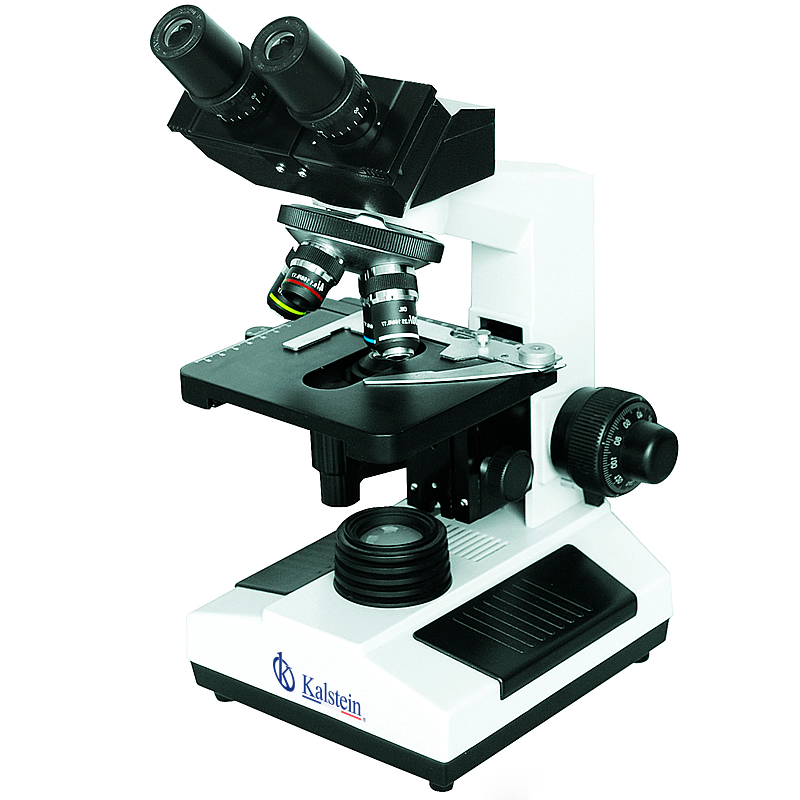We will epistemologically define the word microscope; Micro which means small and scopio which means to observe; this is a reference of the usefulness of this device, which is a device that allows us to observe elements that are invisible to the naked eye, through a lens, viewfinders and rays of light; This instrument includes a set of elements that allows us to enlarge or bring the sample closer to scales where we minimally observe components to perform an analysis and examine the sample.
Optical parts of a microscope
- Focus: emits rays of light.
- Diaphragm: it is responsible for regulating the amount of incident light used in the sample.
- Capacitor: concentrates each ray of light in the sample.
- Object: it is a set of lenses that receive the light from the sample and allows to increase the image.
- Eyepiece: allows you to enlarge and observe the sample.
Mechanical parts of the microscope
- Base: it is the foot of the microscope.
- Micrometric screw: it is a rotating structure that causes the sample to move vertically.
- Micrometric screw: allows you to adjust the distance much more precisely.
- Plate: is the surface where the sample is placed to be observed.
- Tweezers: they are attached to the plate and serve to keep the sample fixed so as not to lose focus.
- Arm: is the structure of the microscope that connects all the components.
- Revolver: it is a rotating structure where the different samples are placed and that allows to alternate the different observed objects.
- Tube: cylindrical structure that joins the eyepiece with the revolver.
Review and technical service of microscopes
The procedures used for the technical service and maintenance of microscopes follow certain general protocols of action; in KALSTEIN we can offeryou the necessary and required advice in your equipment; from the hand specialist experts, guaranteeing the protection and safety of your instrument, however, regardless of the manufacturer we can follow the following protocol:
- General check and checking: verification of the visibility and general state of conservation of the optical parts.
- Disassembly of the equipment and check-up: according to the model of the microscope, the mechanical parts must be separated.
- Cleaning of optical components: cleaning of optical parts.
- Cleaning of mechanical components: cleaning and subsequent lubrication of all mechanical parts.
- Assembly and testing: after reassembling the apparatus, the functions of the mechanical parts are checked and then samples are observed to verify the optical components.
In addition to this preventive maintenance that microscopes must receive, if your equipment requires a repair or technical support, you can contact us through the following linkHERE regardless of the manufacturer’s brand, our engineers will contact you and you will be offered technical assistance respecting the conditions of the authorized agent.
Technical service for microscopes by the Kalstein Laboratory Equipment Company
We, as a manufacturer of laboratory equipment, have a prepared staff always ready to offer you permanent technical support throughout Latin America and Europe; our technical service helps mainly to improve the control and support processes of the line of equipment designed by us, however, we can locate damaged parts, preventive maintenance of your equipment and above all an excellent offer in relation to these products.
In addition to a high level and excellence of price quality, we stand out in the service, operation and tools and instruments of high desire necessary for your laboratory, KALSTEIN stands out in:
- Corrective and preventive maintenance.
- Reparation.
- Installation of equipment.
- Equipment training.
- Sale of spare parts and supplies.
If you want to know the catalog of products or request technical service you can do it through our online purchase channels that are very easy and viable, in the following link: HERE reminding you that we are a manufacturer of laboratory equipment of high level purchase and sale.

